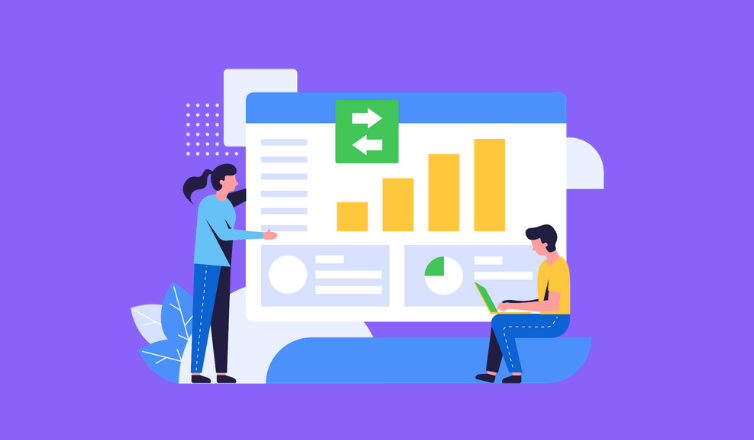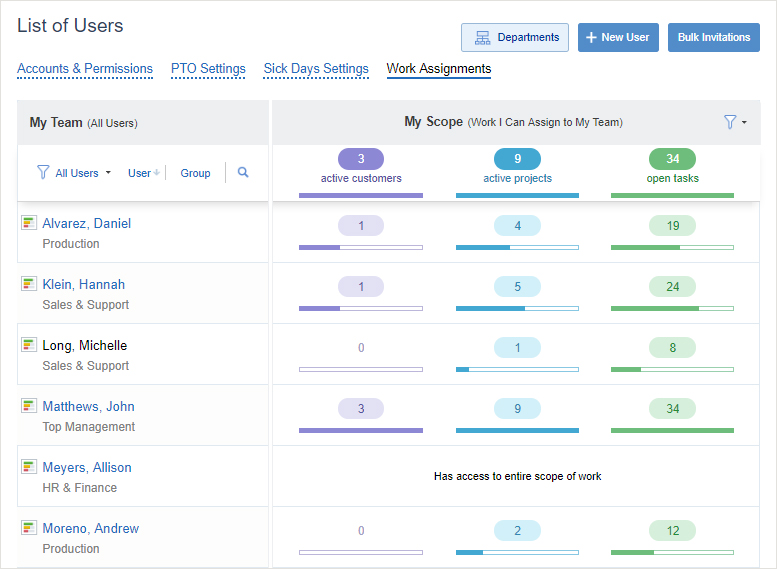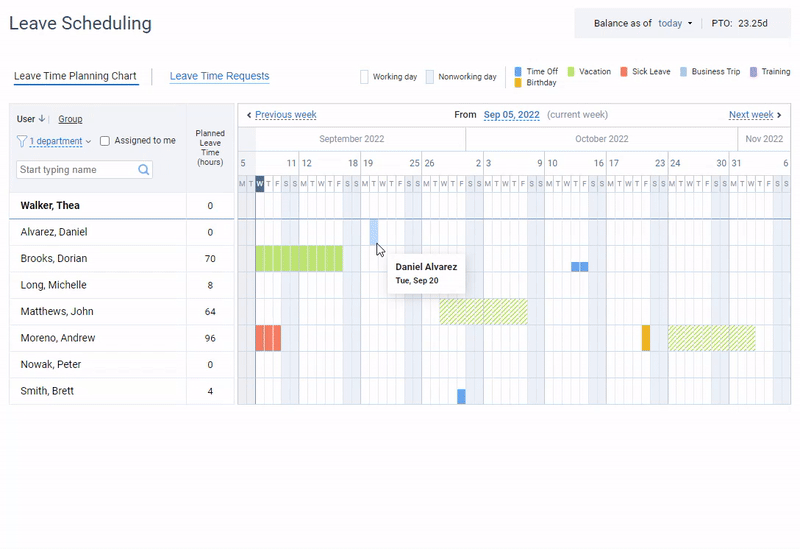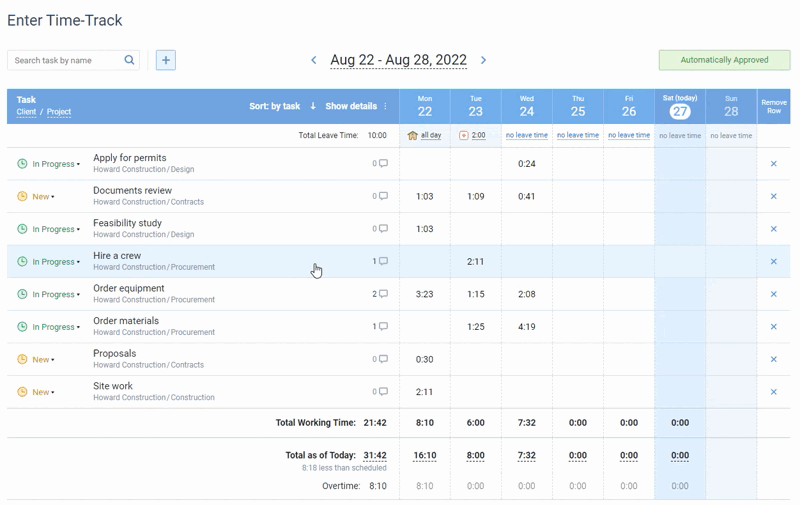
If you are a project manager and you’ve got a project to deliver, there’s no way you can finish it without other specialists, tools, equipment and finances. That’s why project resources are essential components that you need to plan and allocate before the start of the project, otherwise you won’t be able to deliver the project on time and achieve high quality results.
Let’s see what resources are in project management and how do you manage them effectively. Bookmark this article to get back to the list of our favorite resource management tools anytime.
What Are Project Resources?
Project resources are components that are necessary for successful project implementation. They include people, equipment, money, time, knowledge – basically, anything that you may require from the project planning to the project delivery phases. A lack of resources is therefore a constraint on the completion of the project, that’s why resource management is the key project management activity that defines a great part of the project success.

What Is Resource Management in Project Management?
Resource management is the process of planning, scheduling, and allocating resources necessary for successful project delivery. Resource planning is an essential part of any project management methodology that usually takes place at the early project stages.
For example, in Waterfall projects, resource planning is a part of the first Requirements phase where all resources are allocated and scheduled very accurately because this methodology doesn’t allow for changing project requirements. In contrast, in Agile projects, resource management takes place every development cycle: after one cycle has been finished, a new cycle starts with a new resource planning phase.

Work Assignments interface in actiTIME where you can see employee capacity
and manage their workload online
Types of Resources in Project Management
Let’s see what are the main types of project resources.
1. Human Resources
People are the most important resource in your project and your company. It’s the driving force that carries out tasks moving the project towards its completion. To advance the project, your team members should have enough knowledge resources: skills and expertise necessary to make the right decisions and accomplish their assignments efficiently.
At the same time, human resources are the most complex ones because they involve individuals with their own backgrounds, cultures and ways of work, which may cause conflicts and personality clashes at the workplace. More than that, your company and you as a project manager are in charge of empowering and motivating your team members to grow and drive your business forward. Without taking all these aspects into account, your human resources won’t be effective even if they possess the necessary competence and skills to carry out their work.
Another challenge of managing human resources is their allocation and availability. Your team members can get sick, go on vacation, take a parental leave, get burnt out or even leave the team. So, resource allocation and absence management are other important duties of yours and your human resource team to ensure predictable team availability.
Examples of human resources:
- Individual team members
- Project managers
- Team leads
- Project teams
- Outsourced teams
- Freelancers
Useful tools for human resource management:
- Attendance tracking software. Usually, these are team calendars where employees can request time-offs and sick leaves without paper applications. Team calendars give an overview of who’s available, who is absent and for how long, who shows absence patterns that might be signs of absenteeism and more.

Leave management in actiPLANS – create an unlimited number of leave types, get your team to request and plan their time off and review employee availability
2. Financial Resources
Financial resources are another building block of your project. Without them, you won’t be able to finance human resources, purchase material resources and handle other project costs. Usually, financial resources are planned and documented at the earliest stages of project development to allocate them and include them in the project costs that must be approved by clients.
So, cost management is an important part of project management that involves estimating, allocating, and controlling project costs to ensure the most accurate cost estimation and minimize budget overruns.
Examples of financial resources:
- Project budget
- Project grants
- Contingency funds
Useful tools for cost management:
- Budgeting tools. To build accurate project budgets you need a tool that’d track costs using custom hourly rates and tailored financial fields.
- Time tracking software. If you hesitate about what project management tools to adopt, pick a time tracker. Time tracking data combined with cost calculation tools, analytics and report tools, task estimation and project budgeting will ensure your project health.
- Reporting and analytics tools. Usually, these are parts of time and project management tools, but if you still use Excel sheets for calculations, you might need these to import and review your data in charts and graphs. Seriously, we hope that you don’t use Excel – try actiTIME timesheets for free and calculate costs in a few clicks.
3. Material Resources
Material resources include those that the company already possesses, can purchase or lease if necessary. Material resources include tools, equipment, software, machines and raw materials.
Material management includes planning, executing, directing, coordinating, monitoring and controlling of all the processes that are associated with the project materials. Its main focus is obtaining the right materials in the right quantity at the right time.
Examples of material resources:
- Personal computers
- Desks
- Industry software
- Property
4. Time Resources
Time is a non-renewable project resource that is used to schedule project activities, milestones and deadlines, measure employee productivity and project costs. When planning a project, managers set estimates for tasks and project phases to build accurate project schedules and use them to calculate estimated project costs that require client approval. After the project or its stage is completed, managers use time tracking data to review team performance, time and cost budgets and learn from this data to plan future activities better.
The importance of time management in projects, teams and individual performance is underestimated. This is a complex skill that takes time to master but pays off generously. Imagine that you and your team could do much more in less time increasing productivity multifold while growing skills and delivering better results faster. If you are not sure where to start – take a look at these 20 most common time management problems and 100+ tips.
Examples of time resources:
- Project plan
- Project schedule
- Time invested
Useful tools for time management:
- Time tracking software. Assign tasks to your team members and get them to track time against them. Set task deadlines, estimates, assign user rates and review project time and cost expenses in the real time. Generate reports to see team performance and monitor project health.
- Timesheet software. Online weekly timesheets are a great alternative to many task management systems. In the timesheet interface your team members can see their weekly workload and register their working time, while you as a manager can review their performance, time expenses, time distribution across projects and tasks and more.
Ready to Improve Resource Management in Your Company?
Did you notice that all the resources mentioned above rely on the time resources because it is not renewable. It is time that defines the costs and benefits, team productivity, project costs and success. So, if you are not sure how to improve your resource management, start with time tracking.
For example, in actiTIME you can assign tasks to your team members and get them to track their working hours using an online weekly timesheet, a browser extension or a mobile app.

Online timesheet interface in actiTIME where every user can select task parameters
they want to see in their timesheets
You can set estimates, deadlines and budgets, review individual and team performance, see your project progress and costs, manage employee absences and paid-time-off balances, and more. Explore actiTIME for free using a free 30-day trial (no credit card required).
















































